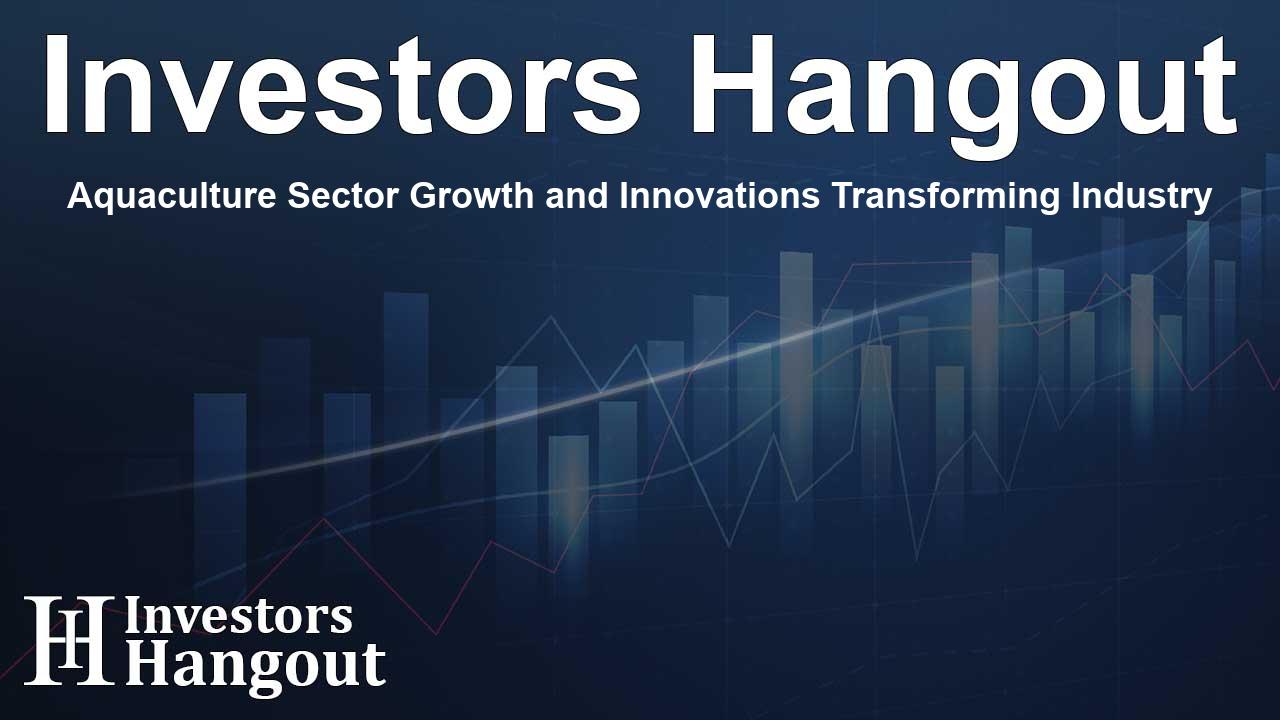Aquaculture Sector Growth and Innovations Transforming Industry

Aquaculture Market Dynamics and Projections
The global aquaculture market is on a remarkable growth trajectory, currently valued at USD 310.66 billion, with projections indicating it will reach approximately USD 513.31 billion by 2034. This growth is underpinned by a compound annual growth rate (CAGR) of 5.15% from 2025 to 2034. The increased consumer demand for sustainable seafood, coupled with declining wild fish stocks, is catalyzing shifts towards more intensive farming practices across varied species and environments.
Overview of the Aquaculture Market
Aquaculture, encompassing the cultivation of various aquatic organisms, is witnessing transformative changes due to innovations in technology, sustainable farming practices, and improved feed formulations. Techniques like recirculating aquaculture systems (RAS) are helping in enhancing production efficiency and mitigating environmental impacts.
Market Highlights
The Asia Pacific region is projected to continue its leadership in the aquaculture market, anticipated to grow from USD 217.46 billion in 2024 to around USD 362.40 billion by 2034, capturing approximately 70% of the global market share. Similarly, the finfish segment is expected to dominate due to high consumer preference for species like salmon and tilapia.
Key Trends Shaping the Aquaculture Industry
Several trends are emerging within the aquaculture landscape, making it essential for industry participants to adapt. The adoption of sustainable practices is growing in response to consumer expectations, with an emphasis on responsible farming methods. Additionally, enhanced research on alternative feed sources is addressing concerns over traditional fishmeal usage.
Technological Innovations Driving Change
Artificial intelligence (AI) technologies are transforming the aquaculture market by improving operational efficiency. AI-driven systems allow aquaculture farms to monitor fish health, water quality, and feeding patterns in real-time, helping farmers to make informed decisions, reduce waste, and optimize resource use. Automating processes can notably improve yields and lower operational costs, fostering long-term sustainability in seafood production.
Market Opportunities for Growth
As awareness grows around seafood as a healthy protein source, the aquaculture landscape is ripe for opportunities. The integration of blue carbon solutions, farming projects aimed at enhancing ecological health, is gaining traction. By cultivating species such as oysters and seaweed that contribute to carbon capture, aquaculture businesses can position themselves to benefit from emerging environmental markets, tapping into new revenue streams.
Regional Insights and Dynamics
Asia Pacific remains a dominant player in the aquaculture market. The region is marked by extensive coastlines and established practices, particularly in countries like China and India. Innovations in farming techniques and strong market demand continue to drive growth.
Challenges in the Aquaculture Sector
Despite promising growth, aquaculture faces challenges, including maintaining water quality in intensive farming setups and fluctuating feed costs. Addressing these issues through technological advancements and sustainable practices is crucial for the industry's resilience.
Frequently Asked Questions
What is the current size of the global aquaculture market?
The global aquaculture market is currently valued at USD 310.66 billion.
What are the growth projections for the aquaculture market?
It is projected to reach around USD 513.31 billion by 2034 with a CAGR of 5.15% from 2025 to 2034.
Which region dominates the aquaculture market?
The Asia Pacific region holds the highest market share, contributing about 70% of the global aquaculture market.
What are some key trends in the aquaculture industry?
Key trends include the adoption of sustainable practices, the use of alternative proteins in feeds, and advancements in precision farming technologies.
How is technology impacting aquaculture?
Technology, especially AI, is enhancing efficiency by enabling real-time monitoring and data analysis, which supports better management and sustainability in aquaculture operations.
About The Author
Contact Addison Perry privately here. Or send an email with ATTN: Addison Perry as the subject to contact@investorshangout.com.
About Investors Hangout
Investors Hangout is a leading online stock forum for financial discussion and learning, offering a wide range of free tools and resources. It draws in traders of all levels, who exchange market knowledge, investigate trading tactics, and keep an eye on industry developments in real time. Featuring financial articles, stock message boards, quotes, charts, company profiles, and live news updates. Through cooperative learning and a wealth of informational resources, it helps users from novices creating their first portfolios to experts honing their techniques. Join Investors Hangout today: https://investorshangout.com/
The content of this article is based on factual, publicly available information and does not represent legal, financial, or investment advice. Investors Hangout does not offer financial advice, and the author is not a licensed financial advisor. Consult a qualified advisor before making any financial or investment decisions based on this article. This article should not be considered advice to purchase, sell, or hold any securities or other investments. If any of the material provided here is inaccurate, please contact us for corrections.
